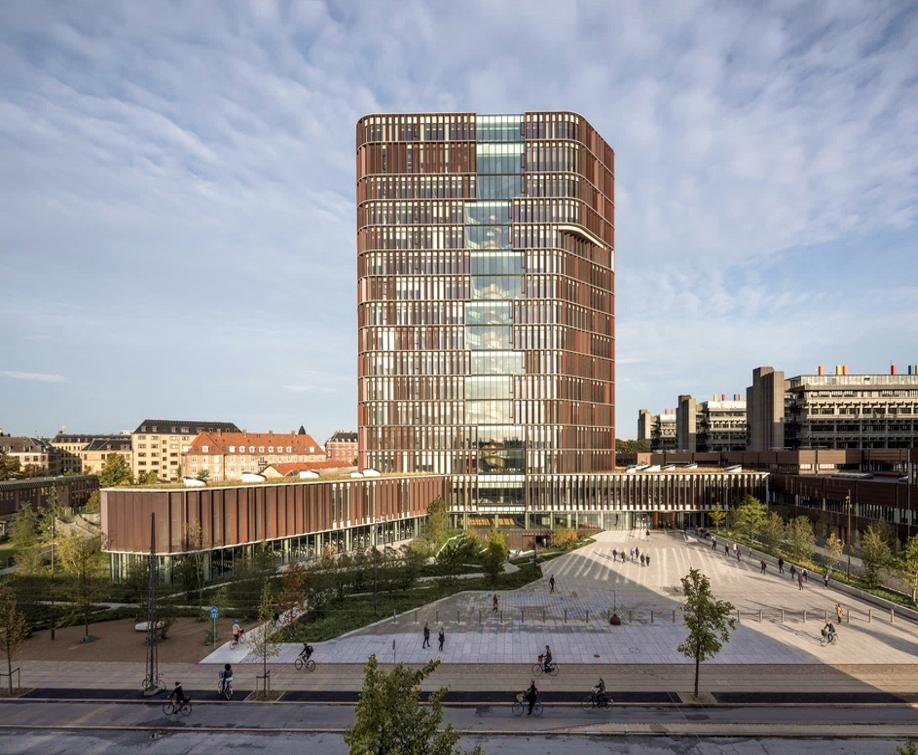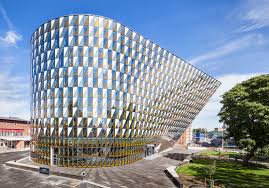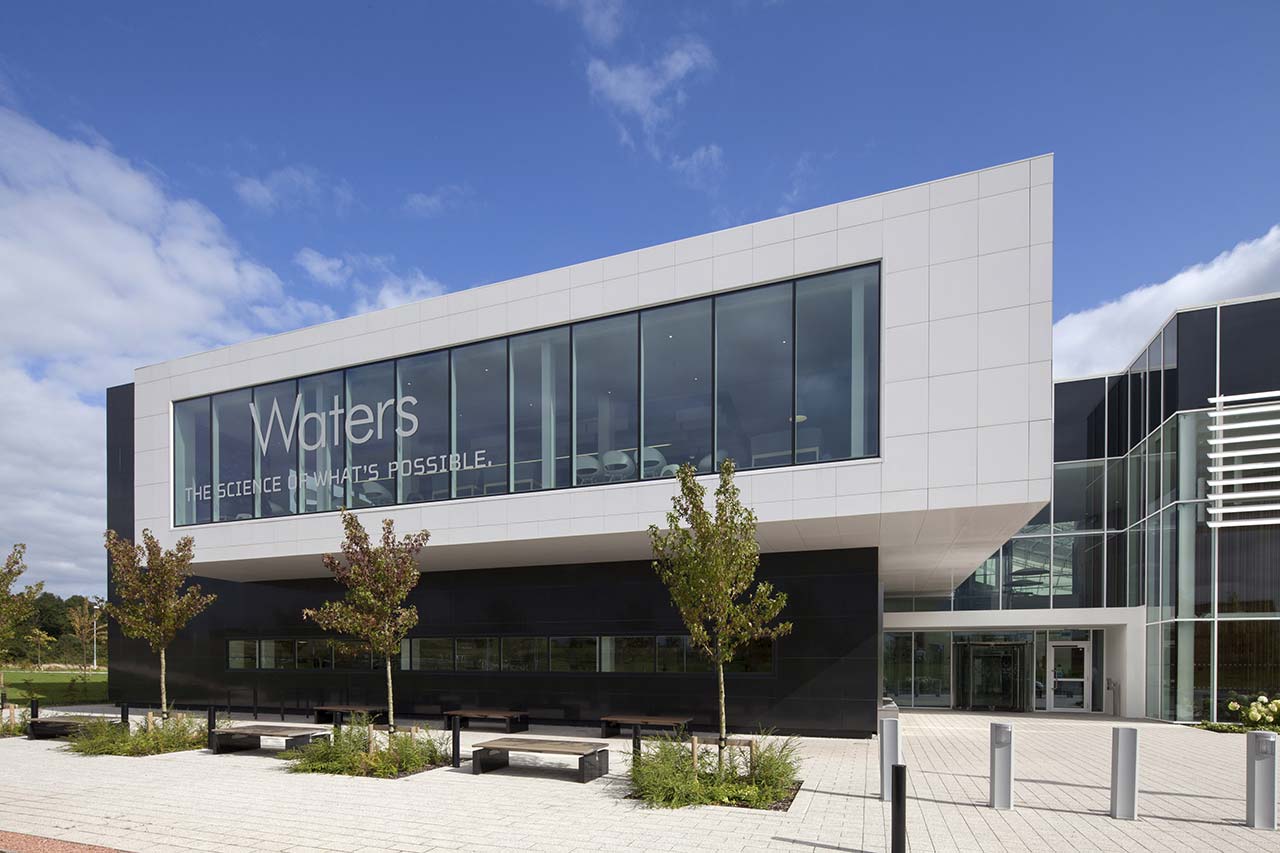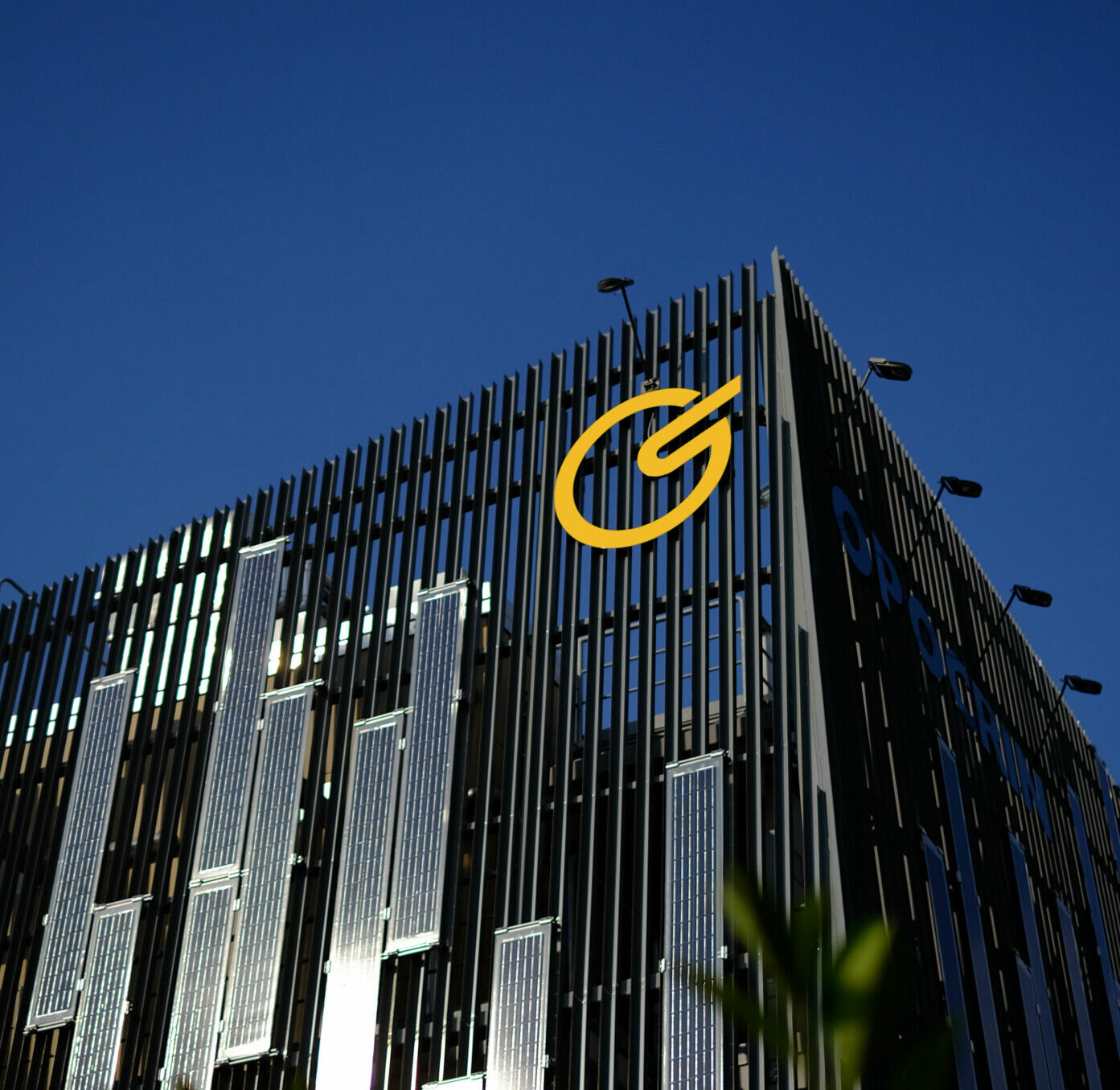Utrecht University, The Netherlands

The Chemical Biology and Drug Discovery group is part of the Utrecht Institute of Pharmaceutical Sciences (UIPS) and focuses on design, chemo- or biosynthesis of compounds with biological or (potential) medicinal applications and interaction with their receptors. Insights thus obtained on interactions can lead to new bio-active compounds, new approaches for the treatment of still incurable diseases and new approaches to unsatisfactory treatments. We are interested in answering questions related to understanding as well as influencing peptide- protein, carbohydrate-protein and protein-protein interactions that underlie biomedical processes such as infection, immunological and neurological disorders.
The department of Chemical Biology and Drug Discovery is fully equipped for chemical synthesis, has two fully equipped ML2 laboratories for eukaryotic and bacterial cell culture work, and has a microarray printing and screening facility. The Bijvoet Institute is equipped with extensive research infrastructure for studying protein structure, interactions and function. It operates the Netherlands Proteomics Center with an extensive mass spectrometry infrastructure, a European NMR facility (9 spectrometers, ranging in proton frequencies from 360 to 950 MHz) and a National X-ray and Cryo-EM facility.
Freie Universität Berlin (FUB), Germany

With approximately 4,200 students and Ph.D. students as well as 72 faculty members, the Department of Chemistry, Biology and Pharmacy is the largest department of FUB. The three institutes in the Department, the Institute of Chemistry and Biochemistry, the Institute of Biology, and the Institute of Pharmacy, have excellent reputations and are networked with a number of leading non-university research institutions such as Max Planck, Leibniz and several federal institutes. The main field of research in the Institute of Chemistry and Biochemistry are structural formation, function and chemical reactivity, stereoselective and macromolecular synthesis, molecular and medical biochemistry and structural biochemistry.
The department of Chemistry, Biology, Pharmacy of the Freie Universität Berlin is equipped with facilities for chemical synthesis and chromatographic purification and hosts the core facility BioSupraMol which provides access to a broad variety of analytical techniques including MS and IM-MS. In addition, there is access to an extensive workshop infrastructure, instrumentation for IM-IRMPD-MS and cryogenic IR spectroscopy and the widely tunable FHI-FEL (3 and 60μm) at the Fritz Haber Institute of the Max Planck Society.
University of Copenhagen, Denmark

Copenhagen Center for Glycomics (CCG) is a Danish National Research Center devoted to the study of diseases caused by defects in the biosynthesis and structure of complex carbohydrates. Currently, the center comprises 5 research groups and hosts more than 40 FTEs in addition to students and guest researchers. Its goal is to be a world leader in glycosciences and make this research area approachable to non-experts in order to facilitate discovery of diseases caused by altered glycosylation, develop new diagnostic and therapeutic tools and identify new ways to design and produce improved glycoprotein drugs.
As a cutting-edge interdisciplinary research center CCG covers several areas of expertise, including precise genetic engineering, carbohydrate chemistry, immunology, bioinformatics and mass spectrometry. Core resources include glyco-engineered cell lines, gene editing tools and protocols, glycoproteome data and bioinformatics tools, in addition to state-of-the-art facilities:
- Mass spectrometry dedicated to traditional bottom-up strategies (TIMS-TOF, OrbiTrap Fusion, OrbiTrap Lumos, Synapt G2, MALDI-TOF Autoflex and 5LC systems), which is the current characterization and discovery mode in the field of glycoprotein analysis and biotherapeutics.
- Protein and carbohydrate biochemistry (3 HPLCs, 4 ÄKTAs).
- Recombinant DNA work (class I and II GMO labs, qPCR, sequenators).
- Cell Culture (4 LAFs, 10 incubators, AxioVision Fluorescence microscope w. image-processing, 3 -150C ultra freezers, flow cytometer and FACS).
In addition, CCGs staff have access to core facilities for experimental animals and advanced microscopy at the Faculty of Health and Medical Sciences at University of Copenhagen. Prof. Turnbull also has access to facilities at the Dept of Biochemistry in Liverpool University. These are fully equipped open-plan labs for biochemistry and cell biology studies, including HPLC and Akta FPLC instruments for glycan purification, analysis and bioassays, plus microarray printing/screening and a suite of molecular interaction & optical biosensor instruments, and Core Facilities including state-of-the-art Proteomics/Mass Spectrometry (Prof. Rob Beynon) and strong existing collaborative links with Waters European base in Manchester (30 min away).
Karolinska Institutet, Sweden

The Arenas laboratory has been working during the last 20 years to understand the mechanisms controlling midbrain dopaminergic (mDA) neuron development, maintenance and degeneration in Parkinson’s disease (PD). We are currently working on the development of novel cell replacement therapies for PD based on the transplantation of human pluripotent stem cell (hPSC)-derived cells as well as direct in vivo reprogramming of astrocytes. Our goal is to integrate broad molecular and cellular information in order to gain a comprehensive understanding of the mechanisms controlling mDA development and maintenance, to develop cell replacement strategies for PD patients. Core competence of our group includes: Cell and molecular biology, developmental biology, stem cell biology, cell transplantation, direct in vivo reprogramming with viral vectors, animal models of Parkinson’s disease, single cell transcriptomics and bioinformatics.
Facilities, infrastructure and equipment available include: (1) Single cell and single nuclei RNA-sequencing (MBB/KI facility in Science for Life Laboratory). (2) Access to the UPPMAX computational infrastructure. (3) FACS sorting facilities at KI. (4) Animal facilities at MBB and KI. (5) KI Imaging facility lead by our division at MBB. (6) hPSC culture facility in our division at MBB. (7) Virus lab facility at MBB. (8) Additional facilities include: Transgenic facility, Genomic, Proteomic, bioinformatics, etc.
Radboud University Medical Centre (RU), The Netherlands

The Radboud university medical center (Radboudumc) in Nijmegen, NL specializes in patient care, scientific research, teaching and training. Its mission is “to have a significant impact on health care”, thereby aiming to be pioneers in shaping the health care of the future in a person-centered and innovative way. A close connection exists between researchers and clinicians and as such, research has a translational character from “bedside to the bench and back”.
The Radboudumc research institute runs a structured graduate school supporting training of graduate students and is accredited by the Royal Dutch Academy of Sciences (KNAW). It harbors about 500 researchers from >40 different countries and has a number of technological core centers including facilities for stem cell research, microscopical imaging, flow cytometry, bioinformatics and mass spectrometry.
The Department of Medical BioSciences is part of the Radboudumc research institute and dedicated to address biomedical applications with knowledge from biochemistry, cell biology, biotechnology, and bioinformatics. In addition, the Radboud Consortium for Glycosciencewas established as an interfaculty initiative to promote research in the field of glycosciencesat Radboud University and Radboud university medical center.
Radboudumc has all the facilities to perform their research proposed in HS-SEQ. These include state-of-the-art molecular biological equipment, access to a next gen sequencing facility, a microscopic imaging center (electron microscopes, multiphoton, confocal and fluorescence microscopes, digital imaging processing, etc.), and a large number of state-of-the-art biochemical instruments including HPLC, FPLC.
Waters Corporation, UK

For over 50 years, Waters Corporation has developed innovative analytical science solutions to support customer discoveries, operations, performance, and regulatory compliance. Specifically, the company designs, manufactures, sells, and services high performance liquid chromatography, ultra-performance liquid chromatography, and mass spectrometry technology systems and support products primarily in the United States, Europe, Japan, and Asia. Our innovations enable significant advancements within the pharmaceutical, life science, biochemical, industrial, food safety, environmental, academic and government industries. Waters is a publicly traded corporation (NYSE:WAT) with more than 6,500 employees and is represented in more than 100 countries around the world.
Within the research department at Waters in Wilmslow we have access to various quadrupole and time of flight mass spectrometer systems. The laboratory includes a laser safe area for MALDI, UVPD and IRMPD experiments upon ion mobility enabled Q-TOF systems. Waters Research Enabled Software (WRENS) allows us to apply arbitrary time dependant potentials to lens elements (as well as other control parameters) within the mass spectrometer. We have access to very well developed ion optical and gas flow simulation packages as well as hardware prototyping facilities. We also have access to powerful commercial data processing software including ion mobility cross section databases.
Opocrin SpA, Italy

Since 1964, Opocrin SpA has been involved in research, production and marketing of active pharmaceutical ingredients derived from animal organs and tissues. Live-saving drugs such as heparin, low-molecular-weight heparin and pulmonary surfactant are active ingredients of greatest interest to the Company. The Company has 150 employees and 10 scientists in the R&D department. Opocrin is involved in projects for the development of new heparin-derived drugs, with no anticoagulant activities, with indications for different therapeutic areas. Opocrin participated in the EU project ELAST-AGE (E.C. Project 018960) in 2006-2008.
The R&D Chemical Lab of Opocrin is equipped for purification, fractionation and partial characterization of glycosaminoglycans, namely Heparin, Heparan sulphate, Dermatan sulphate, Chondroitin sulphate, Sulodexide. All reactions of semi-synthesis, typical of this class of products, can be carried out as well. The R&D Chemical Lab can manufacture generic versions of almost all Low-Molecular-Weight Heparins on the market, in Lab and Pilot scale amounts. Semi-synthesis reactions, fractionation and partial characterization can be carried out also on these LMW-Hs.
The Analytical Department of the Chemical Lab is equipped with several HPLC, IC, UHPLC and GC systems with a large array of detectors, together with many basic instruments. The Lab boasts an extensive expertise in molecular weight and size distribution by SEC and DLS methods. Contracts are in place with external Labs to provide NMR, LC-MS and CE assistance on specific projects.
IntelliHep Ltd, UK
IntelliHep is a spinout company from the University of Liverpool, founded by Dr. Ed Yates and Prof. Jeremy Turnbull and colleagues, established in 2005. It is developing and exploiting technologies that generate novel heparin-based candidates optimised for exploitation in many therapeutic and biotechnology areas. These include “engineered heparins” – these are selectively chemically-modifed heparins which provide a source for identifying and optimising new heparin-based candidates. IntelliHep has platform technologies for combinatorial chemical modification, fragmentation and fractionation of heparins, to produce a range of structures that facilitates the discovery process. They can be applied for rapid identification and optimisation of novel compounds for biotechnology and drug development applications. IntelliHep also offers world-class accessory technologies for exploiting the libraries, and has partnerships for full chemical synthesis of heparin- based compounds and other mimetics. IntelliHep is developing a patent portfolio of next generation heparin candidates for novel applications through licencing IP from a pipeline of University research by its Founders, currently 1 licenced patent on an Alzheimer drug, an option to licence a cancer metastasis drug and further pipeline IP on a spinal injury repair therapeutic.
IntelliHep is a spinout company hosted within facilities offered by the Institute of Integrative Biology in The University of Liverpool; this provides a highly multidisciplinary research environment and houses state-of-the art facilities for basic and translational research exploiting genomics, proteomics and glycomics strategies. IntelliHep also has complementary collaborations with national and international experts in the field of heparinoid compounds.

